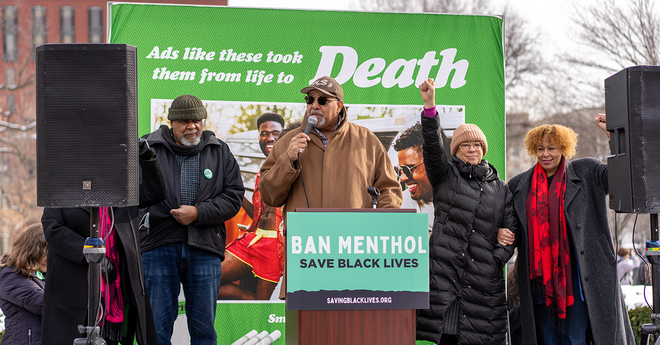How to reduce tobacco use in "social smokers"
"I am not a smoker, I only smoke socially."
Phrases like these concern public health experts because young occasional smokers may transition to heavier smoking in adulthood, or continue smoking at low levels over a long period of time—both of which can lead to tobacco-related disease and death.
57%
57% of young adults who researchers categorized as social or occasional smokers also self-identified as social smokers
National estimates of the prevalence of “social smoking” range from 51 percent to 80 percent in young adult smokers. Since “social smokers”—people who smoke mainly in social settings—typically do not identify as smokers, they can be difficult to reach to prevent escalation of tobacco use or facilitate quitting.
A recent study from the Schroeder Institute® for Tobacco Research and Policy at Truth Initiative®, funded by the National Cancer Institute and published in Addictive Behaviors, examined common social influences on young adult smokers, particularly social smokers.
Researchers analyzed more than 1,500 U.S. young adults between the ages of 18 and 24 who reported ever smoking. Authors identified clusters of nonsmokers, social smokers and smokers based on answers to questions regarding the circumstances under which they smoke, their confidence resisting smoking in social situations and self-identified smoking status. Nonsmokers made up 52 percent of the sample, social smokers 18 percent of the sample, and smokers 30 percent of the sample.
Social smokers tended to be younger than the nonsmokers or smokers. They looked similar to smokers, however, when examining gender, past 30-day marijuana or other drug use, depressive symptoms and anxiety symptoms. Social smokers and smokers also had a similar prevalence of past 30-day tobacco and e-cigarette use—with the exception of past 30-day hookah use, which was higher in social smokers than smokers.
“Our findings show that young adult social smokers are a sizable, distinct class from other smokers, but behave in remarkably similar ways,” said the study’s lead author Andrea Villanti, director of Regulatory Science and Policy at the Schroeder Institute.
Most (57 percent) participants who were classified as social smokers by researchers also self-identified as social or occasional smokers. The young adults in this group who didn’t identify as social or occasional smokers reported being ex-smokers (30 percent) or nonsmokers (12 percent).
“Identifying as a social smoker seems to have utility for young adult smokers in dissociating their smoking behavior from the known harms of smoking,” said Villanti. “Since they do not see themselves as smokers or their smoking as problematic, social smoking young adults may experience little pressure from others to quit smoking or feel reluctant to change their behavior. Identification of intervention strategies to prevent smoking escalation or increase cessation in this group is greatly needed.”
Key takeaways
57% of young adults who researchers categorized as social or occasional smokers also self-identified as social smokers.
66% of social smokers use tobacco only or mainly with others, compared to 6% of smokers.
16% of social smokers used hookah, compared to 8.5% of smokers and 2.2% of nonsmokers.
95% of smokers used cigarettes in the past 30 days compared to 59% of social smokers.
More in traditional tobacco products
Want support quitting? Join EX Program
By clicking JOIN, you agree to the Terms, Text Message Terms and Privacy Policy.
Msg&Data rates may apply; msgs are automated.



